Apart from the picturesque scenery of crystal lakes, canoe routes, hiking trails, and jungle-like valleys across Mount Marcy, you must also be aware of the animals that lurk here and in the surrounding Adirondack highlands spanning over 5,000 square miles.
Northeastern Upstate New York is home to a remarkable array of animal species, ranging from friendly and shy creatures to ferocious predators armed with deadly defense mechanisms.
But these furry friends of ours can quickly turn your fascinating and fantastic time in the mountain range into a nightmare. Therefore, you should be extra cautious when dealing with them and follow the safety advice provided here.
The first step to staying safe from these creatures is getting to know them and arming yourself with the knowledge of what works and what doesn’t in case you encounter one during your stay at Mt. Marcy. So let’s get straight into it!
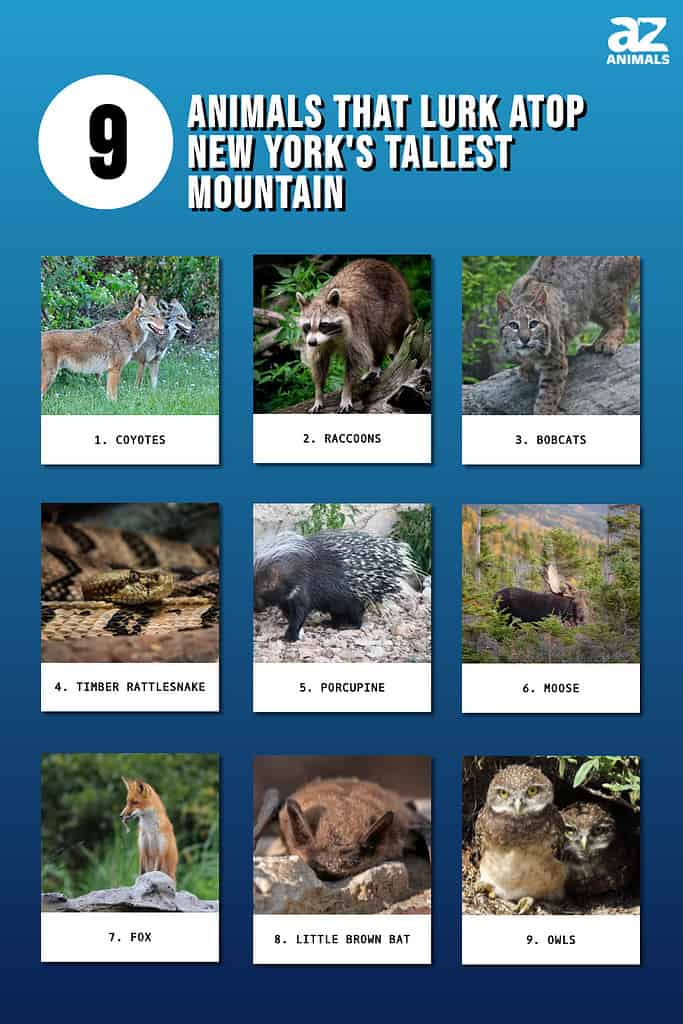
1. Coyotes
Coyotes top the list of animals that lurk atop Mount Marcy. They are the largest wild canine in the surrounding mountain range. The mammals’ scientific name is Canis latrans, and they’re carnivorous. Coyotes are adaptable, and their favorite habitat includes woodlands, oak savannah, and subalpine rainforests.
It isn’t unusual to see a coyote during their daytime hunting sessions in the denning season. But they’re primarily active at night. During such dark hours, you can hear their distinct howls and yips piercing through the blackness blanketing the Adirondacks.
Indigenous to North America, the coyote is prominent in Native American folklore, often embodying the clever and cunning trickster archetype. This characterization befits them well, as they are highly skilled hunters.
While coyotes generally avoid humans, they can exhibit aggression if their young are threatened or if they encounter a hindered or injured person. Additionally, they may become aggressive if they associate humans with a food source. Therefore, it is essential to eliminate or secure potential food supplies, such as garbage cans and pet food, to prevent coyotes from accessing them.
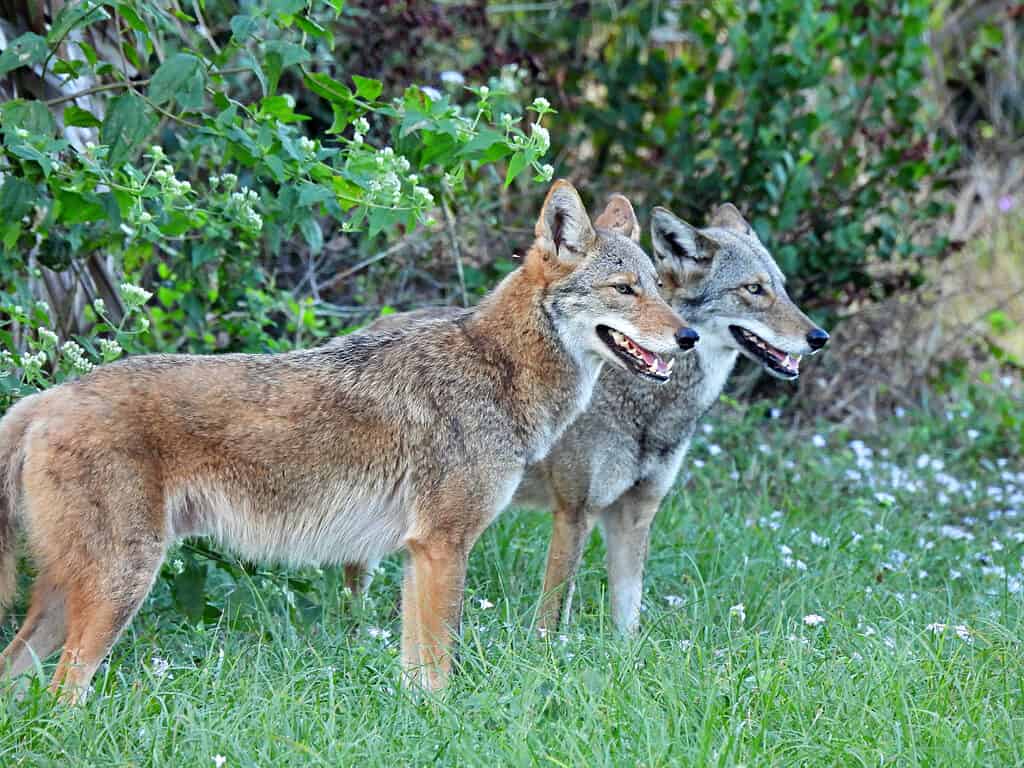
Coyotes can exhibit aggression if their young ones are threatened or if they encounter an injured person.
©iStock.com/passion4nature
2. Raccoons
Besides coyotes, Mount Marcy and the surrounding Adirondacks are teeming with raccoons, particularly in areas where they can find tempting garbage to scrounge. These resourceful creatures go by the scientific name Procyon lotor and are mammals. They thrive in moist woodland habitats and have a diverse diet, as they are omnivores.
These mammals are mischievous and possess a curious disposition. In addition, they are willing to go to great lengths for a meal, whether it involves scavenging through trash cans or sneaking into your tent for a late-night snack. If you have unsecured food or garbage at your campsite, raccoons may take the opportunity to indulge.
But despite their destructive and potentially dangerous antics, their adorable appearance often earns them forgiveness. The animals sport distinctive patches of brown fur on their faces, resembling a mask.
Beware of the innocent appearance of raccoons, as they can be deceptive and potentially pose a threat. These tiny mammals can transmit diseases such as rabies, leptospirosis, and raccoon roundworms, posing a risk to humans and pets.
Furthermore, the animals can damage property and infrastructure. These animals have been reported chewing on wires and destroying walls, ceilings, and woodwork in houses and campsites around the mountains.
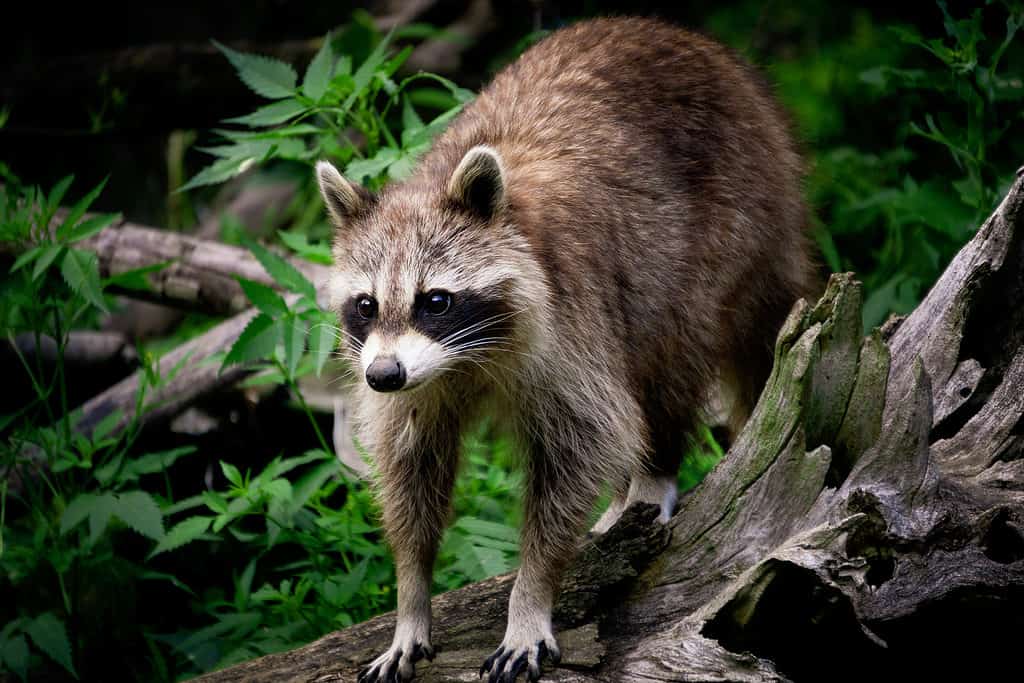
Raccoons can transmit a number of diseases, such as rabies, raccoon roundworms, and leptospirosis.
©John Wherley/Shutterstock.com
3. Bobcats
Bobcats are among the list of animals that lurk throughout the Adirondacks, creating homes on rock piles, in hardwood forests, scrublands, and rocky ledges. Their scientific name is Lynx rufus, and they fall in the mammal category and are carnivorous. While bobcats are only two times larger than domestic cats, they devour rabbits and can hunt prey multiple times larger than them, including deer.
It is natural to assume that bobcats would not target or assault humans. However, a nursing bobcat or one infected with rabies may exhibit an increased inclination to attack. Such situations can increase the risk of transmitting the rabies virus to humans, resulting in severe brain or spinal cord inflammation and potentially leading to death.
Bobcats are primarily active during the night. So they’re more likely to encounter and potentially attack pets while their owners are asleep, a fairly regular occurrence in the camping areas around Mount Marcy. Like larger wild felines, bobcats employ a stealthy approach, often striking from blind spots. The animal is known to launch attacks on unsuspecting pets from behind a tree.
So as you explore Mount Marcy and the surrounding areas, exercise caution and be aware of the potential risks associated with bobcats. Always take precautions to mitigate the chances of any dangerous encounters with these animals that lurk within the forests and trails.

Bobcats are primarily active at night.
©iStock.com/Anita Elder Design
4. Timber Rattlesnake
The hiking adventure atop New York’s highest point may be smooth, but danger lurks along the trails in the form of the timber rattlesnake, a venomous pit viper that calls this region home.
This reptile’s scientific name is Crotalus horridus, and it thrives in mountainous and hardwood forests, lowland cane thickets, and river floodplains. It’s a predatory species that hunt rodents, lizards, birds, and amphibians.
This snake doesn’t typically prey on humans but won’t hesitate to defend itself if it feels threatened or cannot escape an unwelcome presence. In such circumstances, there’s a significant risk of a bite. A bite from this snake is highly potent, and the hemotoxic venom is known to cause severe harm or even fatalities.
Ensure you maintain a safe distance when encountering a timber rattlesnake as you explore Mount Marcy. In addition, refrain from actions that may provoke them. These are the most practical ways to minimize the potential risks when encountering this fascinating yet venomous species.
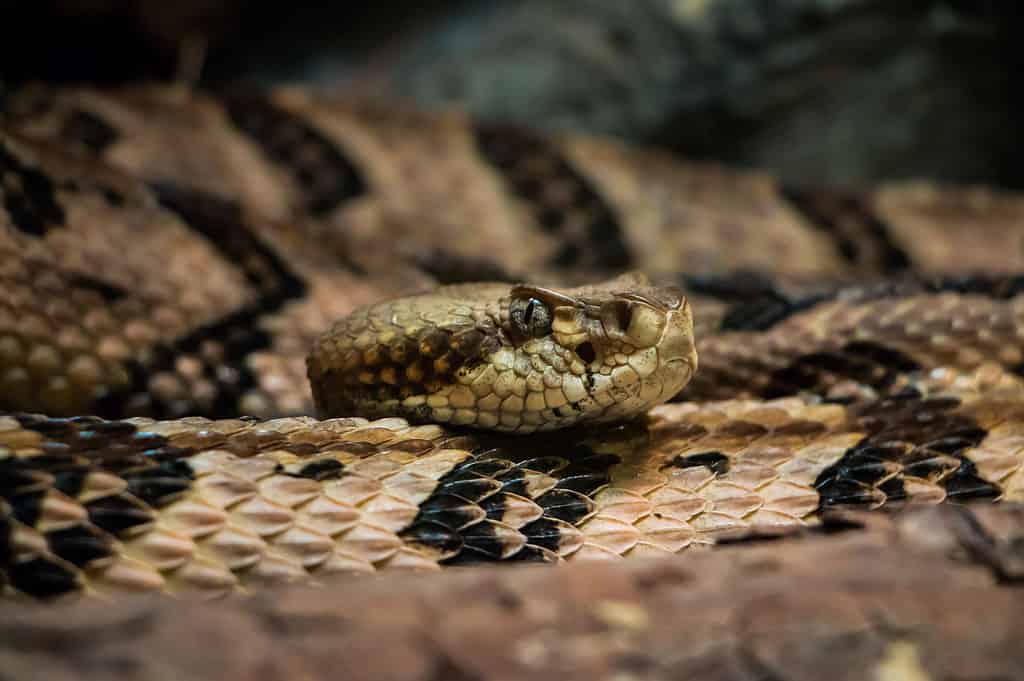
Timber
rattlesnakes
, also known as canebrake rattlesnakes, are a venomous species native to the Eastern United States.
©Dennis Riabchenko/Shutterstock.com
5. Porcupine
Mount Marcy is also home to one of the gentlest creatures in the world, the porcupine. The porcupine’s scientific name is Erethizon dorsatum, and they prefer to stay in the vast grasslands that form the greatest chunk of the Adirondacks. Surprisingly, these herbivores are the second-largest rodent in the Adirondacks and can weigh nearly forty pounds.
While porcupines are undoubtedly fascinating, it is advisable to maintain a safe distance from them. When faced with curious hands approaching too closely, they won’t hesitate to detach their spiky quills. These quills should not be underestimated, as they possess the potential to puncture the skin, traverse through muscle tissue, and eventually penetrate body cavities and internal organs. Such encounters can result in various diseases, including rabies or other infections.
Fortunately, porcupines cannot shoot their quills as a defensive mechanism. In addition, they are naturally herbivores and will generally avoid confrontation if humans steer clear of them.
By exercising caution and respecting the porcupines’ personal space, individuals can minimize the chances of unwanted encounters and ensure their safety.
Appreciating these unique creatures from a safe distance allows for a harmonious coexistence in the natural environment of the Adirondacks.
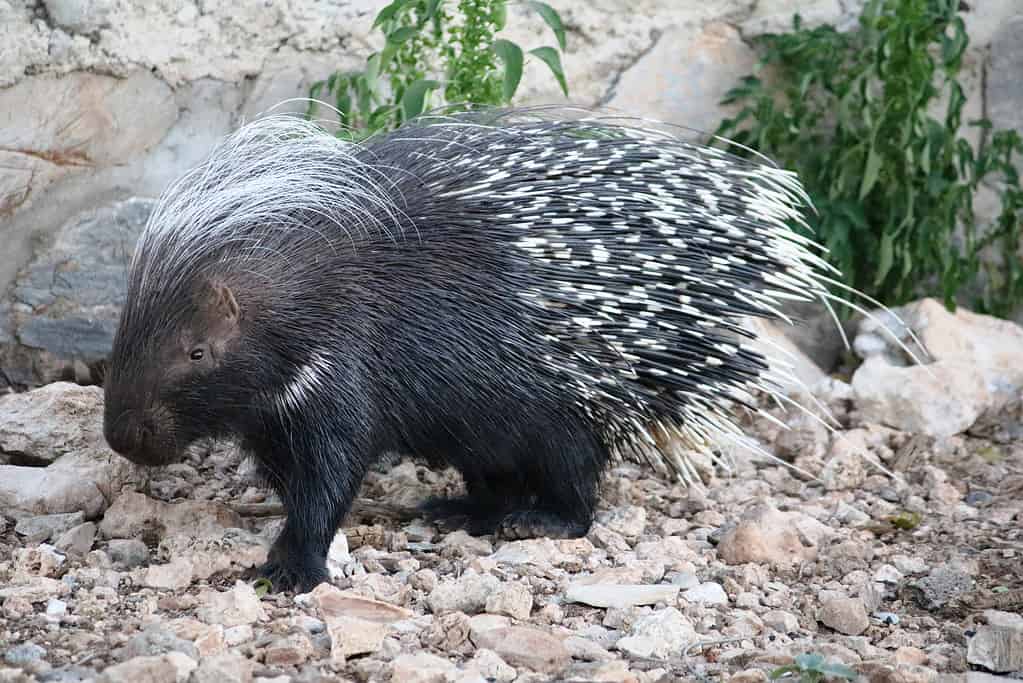
Porcupines are the second largest rodents in the Adirondacks and can weigh almost 40 pounds.
©iStock.com/ClaraNila
6. Moose
Moose are arguably among the most iconic animals lurking atop Mount Marcy. Going by the scientific name Alces alces, these herbivore mammals reside in mixed forests, boreal forests, and temperate broadleaf areas.
You can quickly identify them by their towering form, with the males exhibiting sprawling antlers. According to National Geographic, these majestic mammals can exceed half a ton in weight and can be over six feet tall. In addition, the male antlers can measure six feet from one end to the other.
Surprisingly, adult moose reign supreme atop New York’s highest mountain, as they have no known predators in the region. This freedom places them at the top of the local food chain, a privilege that can be attributed to their size, with a bull moose reaching an impressive weight of 1,200 pounds.
Moose are herbivores, so they do not prey on humans. However, their imposing size makes them a formidable threat within the Adirondacks. Standing between five and 6.5 feet at the shoulder, moose are undeniably large creatures. Their antlers span over six feet, which they employ to protect their calves or when they perceive a threat, leading to potential attacks.
Currently, the population of moose in the Adirondacks ranges from 400 to 800. Although this number may seem modest, it signifies positive growth. Hunting moose is strictly prohibited in New York State, contributing to the gradual recovery of the moose population.
The presence of these majestic animals adds to the allure and ecological balance of the Adirondacks. Respecting their space and adhering to guidelines of wildlife observation ensures the preservation of these magnificent creatures while allowing humans to appreciate their existence harmoniously.
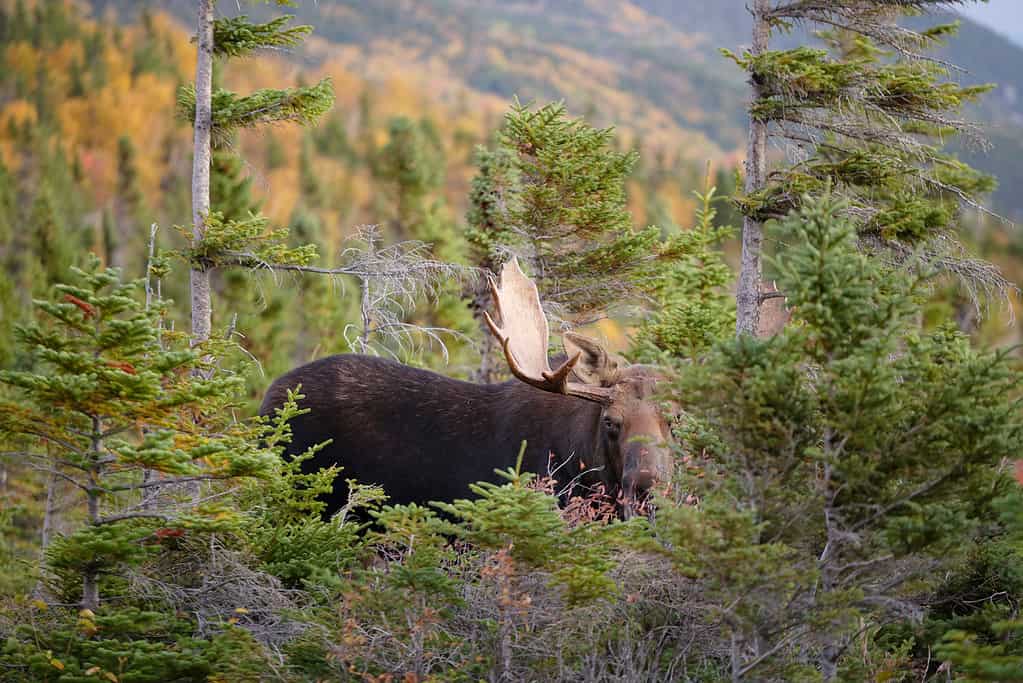
Moose are incredibly large creatures standing between 5 and 6.5 feet.
©Paul Tessier/Shutterstock.com
7. Fox
You’re also likely to encounter foxes roaming on Mount Marcy. Going by the scientific name Vulpes vulpes, these omnivorous mammals reside in forests and grasslands throughout the mountain range. Mainly the gray and red foxes are the most prevalent here. However, they avoid human beings at all costs, preferring to spend their time hunting smaller prey.
But now that you know how they perceive humans, don’t use this knowledge to frighten them. These seemingly harmless animals may attack whenever they feel trapped, cornered, threatened, injured, or unwell. Furthermore, foxes are also susceptible to rabies, and you should treat any bite as potentially rabid due to the seriousness of the virus. So steer clear of them if you have a chance encounter.
The American red fox is commonly featured in Native American folklore. Different tribes portray this mammal in varying ways — some depict it as cunning and mischievous, similar to the coyote, while others perceive it as a noble and wise messenger.
Fortunately, these intelligent and agile creatures are in numerous locations within the Adirondacks. They avoid crowded and noisy areas, preferring to keep their distance. So stay vigilant and be patient to catch a glimpse of one.

Foxes roam discreetly in various locations throughout the Adirondacks, skillfully evading any encounters with humans.
©Ian William Hromada/Shutterstock.com
8. Little Brown Bat
The little brown bat is the most predominant among Mount Marcy’s four mouse-eared bat species. Spread throughout vast sections of North America. These bats reside in hollow trees and houses in the summer before hibernating in mines and caves during winter. While some consider them a nuisance, bats are harmless and offer valuable ecological benefits.
Little brown bats are nocturnal and have an average wingspan of 8-9 inches. Adults typically weigh around 0.3-0.4 ounces, with females slightly heavier than males.
Covered in dark brown hair with a glossy golden sheen, little brown bats have distinctive black wings resembling hands, enabling them to fly at speeds ranging from 4 to 21 mph. Active during the night, they utilize echolocation, emitting rapid sound pulses that bounce off objects, allowing them to locate prey and navigate their surroundings.
Bats are crucial in the ecosystem as they consume hundreds of flying insects daily. Through the use of echolocation, they capture insects while in flight. The flying mammals use their tail membrane to scoop them up and transfer them to their mouths. Their agile movements result from their tendency to pursue swarms of bugs.
Thanks to their rapid chewing and digestion, little brown bats can consume over 1,000 insects per feeding period, typically lasting 1 to 5 hours. While bats can carry and transmit rabies, they are generally not dangerous animals. However, they have gained a reputation as a nuisance species due to their potential to inhabit buildings during the day. When not hunting at night, bats seek refuge in warm and dry places such as attics, home cracks, or floorboards.
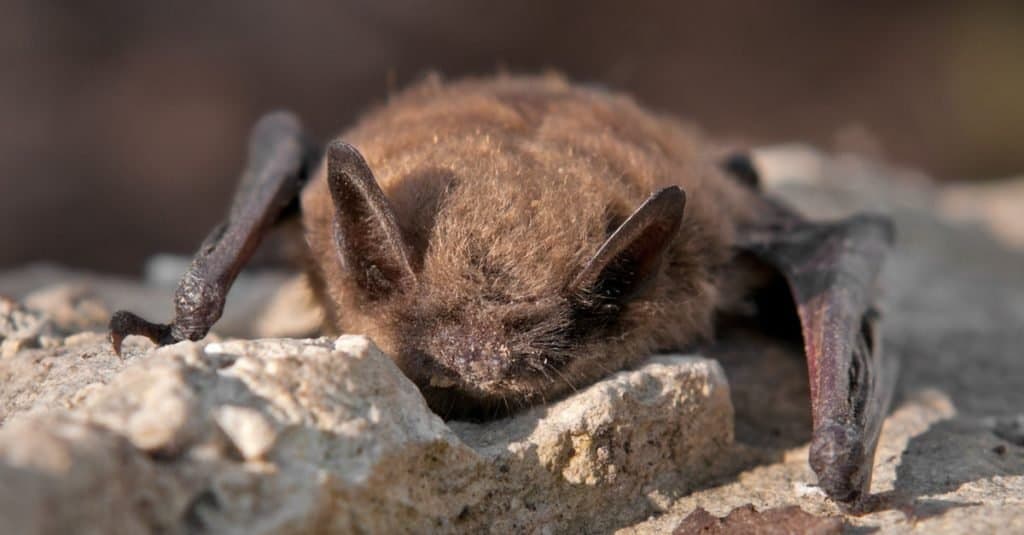
Bats utilize echolocation to capture insects while in flight.
©Geoffrey Kuchera/Shutterstock.com
9. Owls
For most people, bird watching in the early evening or at night might seem strange and unwelcome. However, it might be worth it if you’re visiting New York’s highest mountain, as you’ll get to experience some of the numerous owl species. The majestic birds prefer to lurk in the darkness when hunting, leveraging their incredible hearing ability to trace and track their next meal.
You’ll encounter several types of owls on this majestic mountain range. For instance, you’ll come across the northern saw-whet owl, the smallest among the owls in the Northeast, measuring around 7 to 8 inches in height. These owls nest in tree cavities and primarily feed on rodents, although they also consume small birds and insects. They tend to tolerate human presence, allowing for a close approach.
You may also encounter the eastern screech owl, which prefers nesting in cavities and often utilizes the same hole for protection throughout the year. Their coloration varies, with some exhibiting a reddish hue, referred to as the Red Morph, while others display a gray appearance.
The boreal owl is another common bird on Mount Marcy, with males noticeably smaller than females. This bird measures approximately 8 inches in length. While primarily found in Ontario, Canada, they occasionally reside in the Adirondacks during winter.
Mount Marcy is home to the great-horned owl, also famous as the tiger owl or the hoot owl. These large and robust owls possess distinctive feathered tufts on their heads and broad wings. They can attract the attention of blue jays and crows, which sometimes hassle them.
Finally, you may see the long-eared owl smaller than its great-horned counterpart. This bird loves to roost in coniferous trees near open grassy fields and typically perches close to the tree trunk.

Mount Marcy is home to several owl species, such as the screech owl, the boreal owl, and northern saw-whet owl.
©iStock.com/passion4nature
Staying Safe During Your Camp Atop New York’s Highest Mountain
Mount Marcy and the surrounding Adirondack High Peaks promise a memorable camping experience. But you’ll only have the best time if you are safe from the dangerous animals lurking in this region. Fortunately, several practical steps can help you avoid the dangers that come with these unwanted guests in your campsite.
The first step is to stop by the store and buy the basics. For instance, you can stock your packs with bear spray and flashlights. Once you get to your campsite, get loud to keep most of these dangerous creatures out of sight. You don’t have to create a full-out ruckus. Car engines, campfire cracking voices, and other sounds are just enough.
Next, always keep your pets on a leash, and keep your distance whenever you encounter a potentially dangerous animal. Finally, keep your campsite clean to prevent unwanted scavenging visitors.
Summary of 9 Animals That Lurk Atop New York’s Tallest Mountain
| Rank | Animals |
|---|---|
| 1 | Coyotes |
| 2 | Raccoons |
| 3 | Bobcats |
| 4 | Timber Rattlesnakes |
| 5 | Porcupines |
| 6 | Moose |
| 7 | Fox |
| 8 | Little Brown Bat |
| 9 | Owls |
The photo featured at the top of this post is © Andy Williams photos/Shutterstock.com
Thank you for reading! Have some feedback for us? Contact the AZ Animals editorial team.







